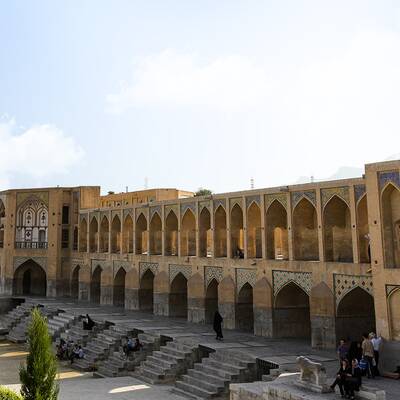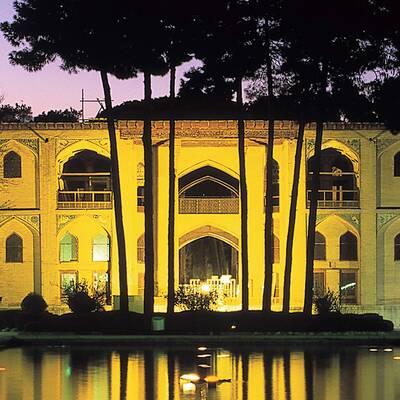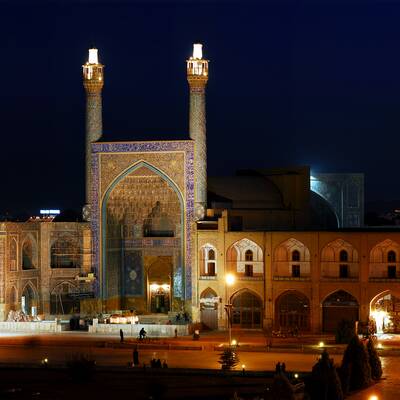Si-o-Se-Pol, literally meaning thirty-three bridges, is a magnificent and unique structure built over the Zayanderud River. It is also known by the name of its erector, Allah Verdi Khan, who was one of the generalissimos of Safavid dynasty.
The architecture of Si-o-Se-Pol was Master Hossein Bana Esfahani. The genius of this artist can be realized when we are informed that despite all the bridges that have been built in the narrowest part of the river, Master Hossein Bana chose widest part of Zayanderud to build Si-o-Se-Pol. The reason for his decision was that it is the shallowest part of the river, and also provides great views of the surrounding.
During history, many travelers and tourists have adored and admired Si-o-Se-Pol. Some of them are the British writer and geography scientist Percy Sykes, the French traveler Jean Chardin, and the Ambassador of King of Spain Don Garcia. They have all mentioned the many beauties of the bridge in their notes.
It has been recorded in historical texts that during the Safavid era, Si-o-Se-Pol was one of the public locations for holding annual Abrizgan and Abpashan Ceremony on the 13th of Tir, during which people pour water and rose water as a celebration of cleanness and purity.
The importance of Si-o-Se-Pol amongst the other bridges of Zayanderud is in its location, as it connects the famous Chaharbagh Street on the two sides of the river. It is said that the bridge was three hundred and sixty meters long when it was first built, and it had forty vaults. Today Si-o-Se-Pol is two hundred and ninety-five meters long and has thirty-three vaults, which is the reason for its name. However, it is still the longest bridge built over Zayanderud.
One can easily walk onto the bridge. As one walks over the bridge, he can enjoy the view of the river and its surrounding. In the past, there used to be two parallel grooves along the bridge that separated the path for pedestrians from the one intended for the carriages and the cattle.
The materials used in the structure of the bridge include stone, brick, mortar of Sarooj and plaster. The combination of these materials adds to the durability and strength of the bridge. However, the drought of recent years has led to concerns about the condition of the piers of the bridge.
In a trip to Isfahan, visiting Si-o-Se-Pol during night time, when it is beautifully lighted, should not be missed.
.jpg)
_0.jpg)
.jpg)
.jpg)
.jpg)


